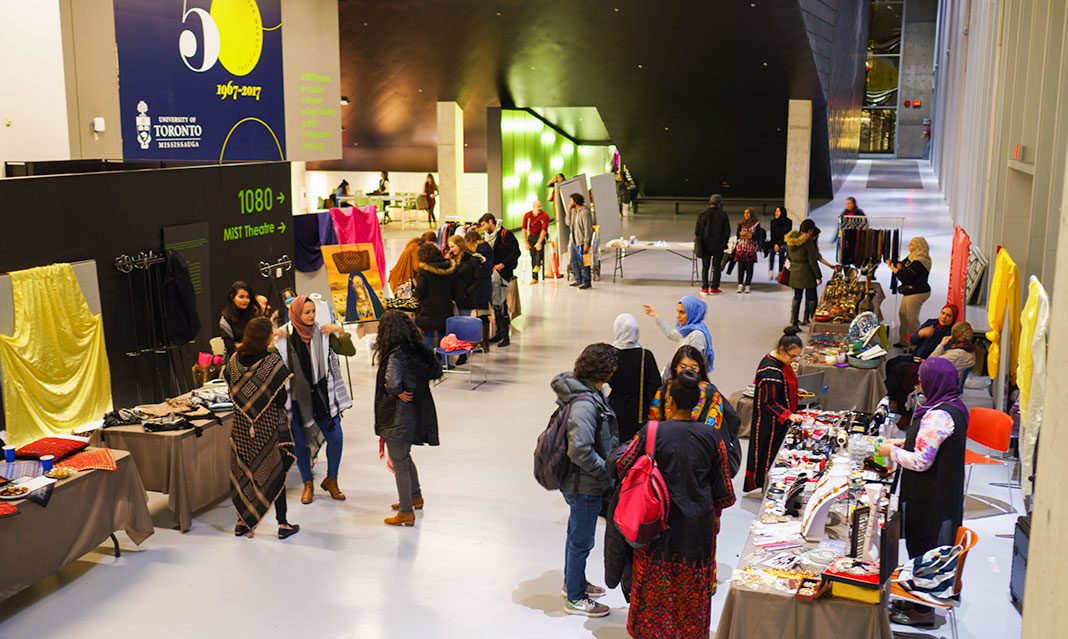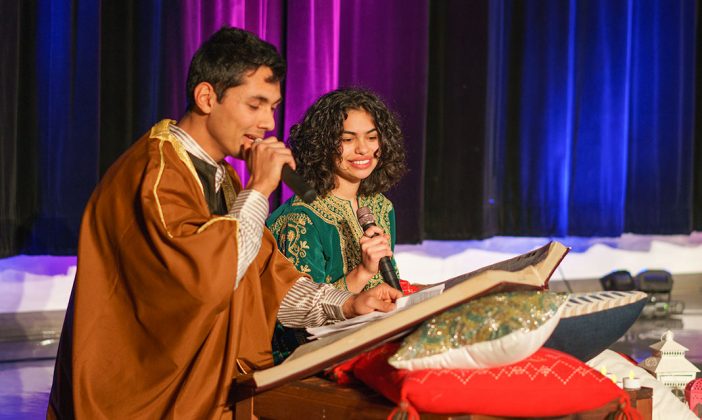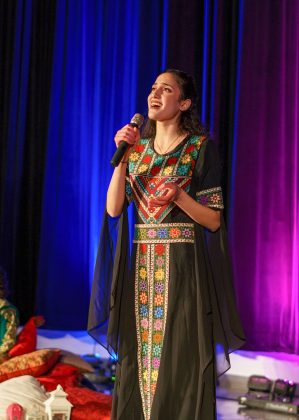This past Friday evening, I attended “One Thousand and One Nights”—an event put on by the Middle Eastern Students’ Association. The event featured a small bazaar outside CCT1080 before the formal show began, where students were dressed in traditional clothing. The makeshift bazaar had vendors selling jewelry and trinkets from Syria, Lebanon, Jordan, and other countries from the region.
Zahira Tasabehji, a third-year psychology and political science student and president of MESA, said that MESA “wanted to show that the Middle East is not what the media portrays it to be,” she said, “We hear too much about the war and conflict in our countries, and this leads to the wrong perception. We want to show that the Middle East is a place rich in culture and beauty, and for people to experience that.”
When asked about how the show would play out, she said, “We based this event on the classic story of One Thousand and One Nights, where the Princess Scheherazade would tell the King Shahryar a story every night. The MC would be the king, and each performance is a story.”
Essentially then, the event was an Arabic-themed open mic night. The event kicked off with a fashion show which showcased beautiful traditional garbs, handmade by the Association of Palestinian Students. A clock was then wound backwards to symbolize telling a story each night with individual performances that each portrayed a different aspect of Middle Eastern culture. They included songs, poetry, and dance—the latter of which was my personal favorite.
I was really captivated, especially, by the dabke, or line dance. It was performed by four students dressed in folk attire came off as professional and spectacular. I felt like I was beginning to see through a clear window into this separate culture that I had little knowledge of. As someone of an Eastern European background, where folk dances are also treasured, it was something that personally touched me.
In the middle of the show, an intermission was called, and the audience went outside the hall where we were served some complimentary regional pastries, cookies, and tea.
Another highlight of the event was a sword-dance, something that I wasn’t at all expecting. Five male students with black masks descended from the stairs and engaged in some very impressive twirling and rhythmic combat dance. In the background were two students playing traditional percussion instruments.
The best part of the night, in my opinion, happened when the students put their swords away and took off their masks. One of them, who was previously the MC, took a microphone and began singing an Arabic folk song. The other students, who were portraying warriors, danced to the percussion in the background. Everyone in the hall was clapping along to the rhythm, some even getting up to dance. The song involved one of my favorite song tropes, repeating lyrics to the audience and waiting for them to sing it back, which a lot of people did.
The sense of community in the event was almost intoxicating—I got the sense some of these performances could have been done a thousand years ago without any changes. One of the benefits of our multicultural society is that I can get a glimpse at this wonderful world and feel welcomed by the community.






